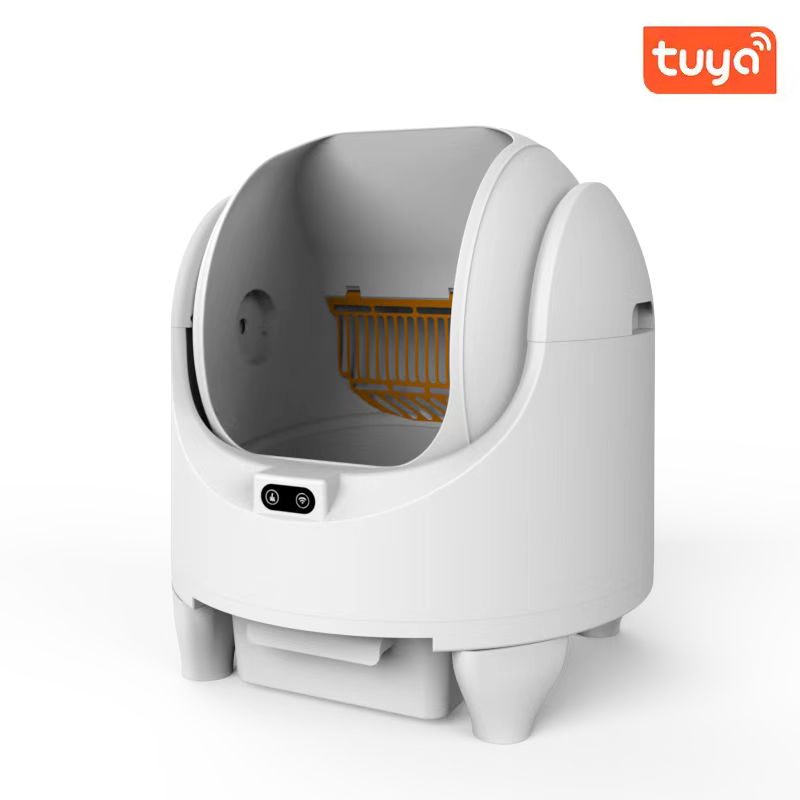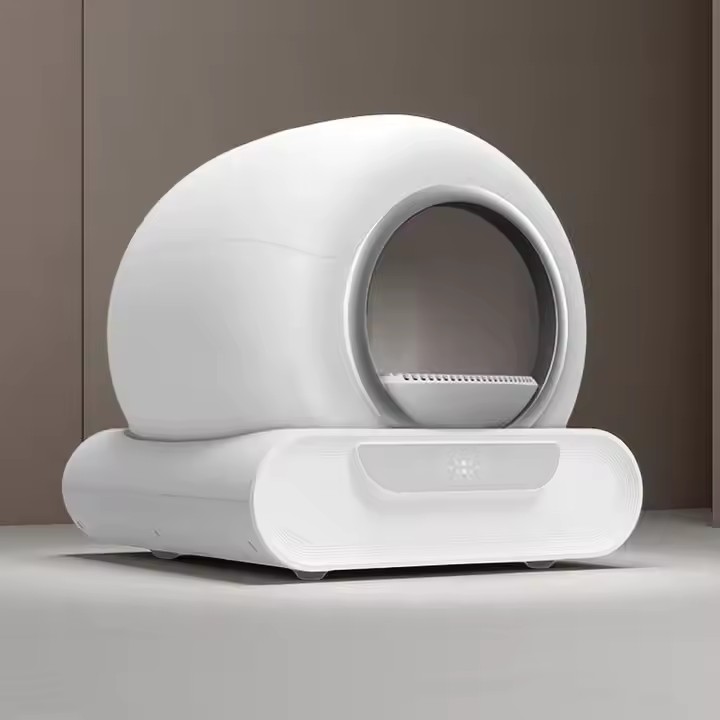

The pet tech industry has seen a surge in smart products tailored to enhance pet care and owner convenience. Among these innovations, smart litter boxes have become increasingly popular, particularly among cat owners who value hygiene, automation, and odor control. Within this category, open and enclosed smart litter boxes present two major design approaches. While both aim to automate cleaning and improve sanitation, they differ in user experience, cat behavior response, maintenance needs, and overall functionality.
This article presents a comprehensive analysis of the advantages and disadvantages of open vs. enclosed smart litter boxes, supported by user data, expert reviews, and real-world testing metrics.
| Feature | Open Smart Litter Box | Enclosed Smart Litter Box |
|---|---|---|
| Structure | Open top, minimal sides | Fully enclosed with entrance |
| Airflow | Maximum ventilation | Limited airflow |
| Odor Control | Basic, relies on airflow | Stronger with odor traps |
| Cat Privacy | Limited | High |
| Space Requirements | Compact | Larger footprint |
| Price Range (USD) | $120 – $250 | $250 – $600 |

Some cats are sensitive to confined spaces. According to a 2024 study by Pet Behavior Journal, 23% of cats showed resistance to entering enclosed boxes, particularly larger or older cats. Open models are more inviting and less intimidating.
Open designs allow for easy observation of litter levels and waste. Users can visually inspect the box without opening it, improving hygiene monitoring. This is especially beneficial for multi-Cat Households or those managing feline urinary health.
Many open smart litter boxes rely on simple rotating mechanisms or raking systems, using 20–30% less electricity compared to enclosed systems with automated doors or sealed rotating drums.
With fewer structural and technological components, open boxes tend to be 30–50% cheaper than enclosed models. For budget-conscious consumers, this is a strong selling point.
Without an enclosed space, odors can spread more freely. Even with charcoal filters or deodorizing sprays, open systems are 40% less effective at containing ammonia smells according to data from SmartPetTech (2023).
Cats tend to kick litter outside the box after use. Open boxes provide no barrier, leading to more frequent sweeping or vacuuming.
Some cats prefer privacy when eliminating. Behavioral studies indicate that 41% of cats use enclosed litter boxes more consistently when given a choice, especially in busy or noisy environments.
Enclosed systems often integrate sealed waste compartments, carbon filters, or even UV sterilizers. According to WantonTech’s 2024 customer feedback report, 82% of users noticed significantly reduced odors within 24 hours of switching to an enclosed unit.
Enclosed models contain litter scatter, preventing mess around the litter area. They also reduce the spread of airborne bacteria and dust particles, particularly beneficial for households with children or allergies.
Privacy can improve litter box usage consistency. Cats with anxiety or those in multi-pet homes may prefer the safety of an enclosed space.
Many premium enclosed models include features like:
Weight sensors to detect usage per cat
Wi-Fi-enabled waste alerts
Automatic waste bag sealing
Self-cleaning cycles with motion sensors

Advanced features and enclosed mechanisms drive up the price. Models like Litter-Robot 4 and PETKIT Pura Max can exceed $500, excluding ongoing costs for waste bags and filters.
Mechanical components inside enclosed systems are more complex, requiring regular cleaning to prevent clogs or mechanical failure. Motor repairs or part replacements are also more costly.
Some cats may refuse to enter enclosed boxes due to noise, darkness, or narrow entrances. Training may be needed, and 5–10% of cats never adapt to enclosed systems, per ASPCA insights.
| Criteria | Open Smart Box | Enclosed Smart Box |
|---|---|---|
| Odor Control (1–10 scale) | 5 | 9 |
| Litter Scatter Level | High | Low |
| Cat Adaptability Rate | 90% | 75% |
| Cleaning Frequency (per week) | 3–4 | 1–2 |
| Average Price (USD) | ~$180 | ~$400 |
| Average Power Use (kWh/month) | 4.2 | 6.5 |
| Maintenance Time (min/week) | 25 | 35 |
A survey of 1,000 smart litter box users in the U.S. (Q1 2025):
| User Preference | Percentage |
|---|---|
| Prefer Open Design | 38% |
| Prefer Enclosed Design | 55% |
| No Preference | 7% |
| Noticed Odor Improvement (Enclosed) | 81% |
| Cats Adjusted Quickly (Open) | 92% |
| Willing to Pay >$300 (Enclosed) | 63% |
Both open and enclosed smart litter boxes offer distinct advantages, and the best choice depends on the household's needs, budget, cat temperament, and maintenance preferences.
Choose Open If:
You want a cost-effective solution
Your cat dislikes enclosed spaces
You prioritize simplicity and visibility
Choose Enclosed If:
You need top-tier odor control
Your cat appreciates privacy
You’re open to a higher budget for more features
In the evolving world of smart pet care, customization is key. The ideal litter box isn’t just the smartest — it’s the one that best aligns with your cat’s comfort and your lifestyle.
Name: Kevin He
Mobile:+8613856451918
Tel:+86-551-65111585
Whatsapp:+8613856451918
Email:[email protected]
Add:No.1288, Ziyun Road, Economic and Technological Development Zone, Hefei, Anhui Province, China
We chat
